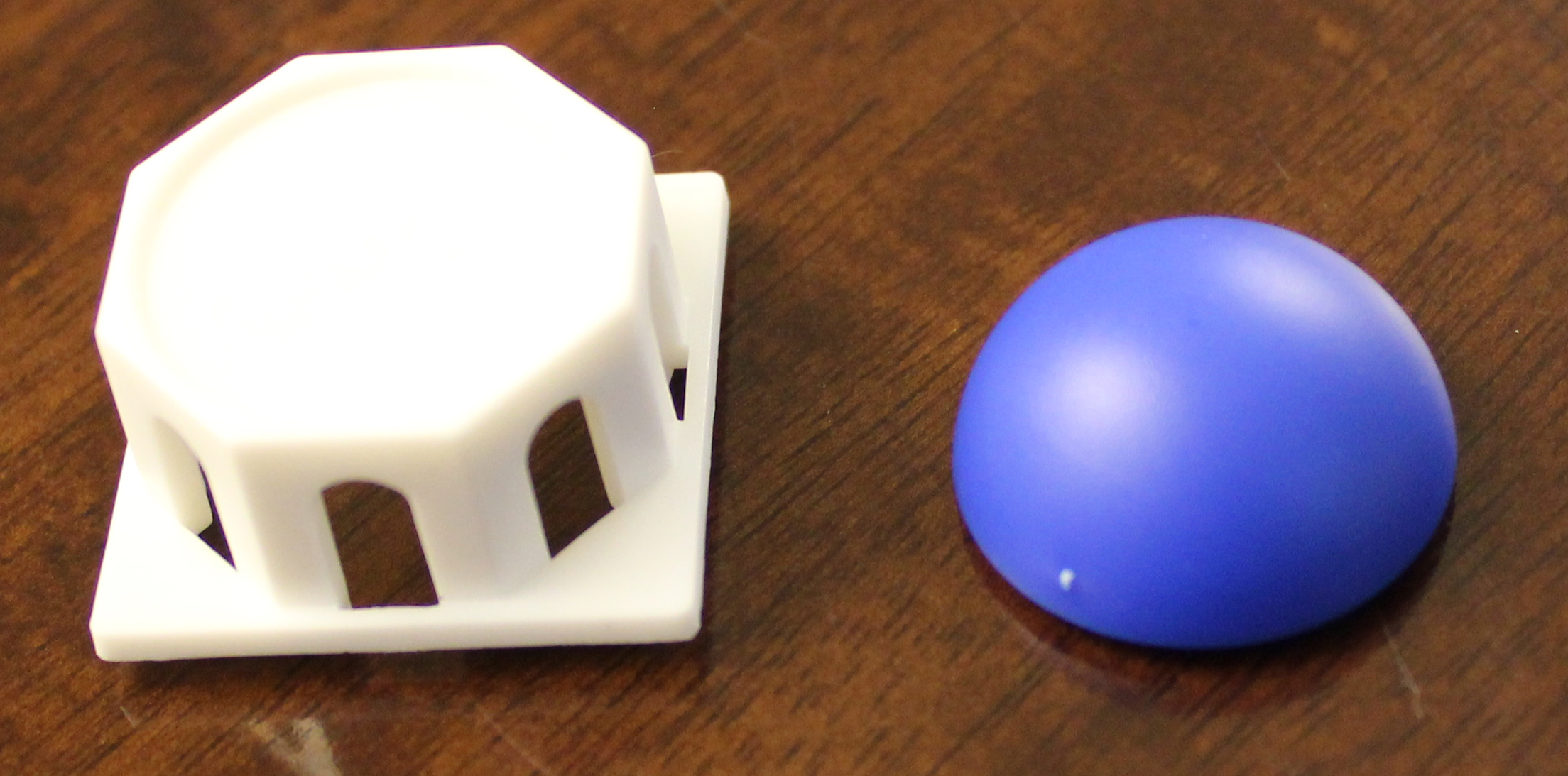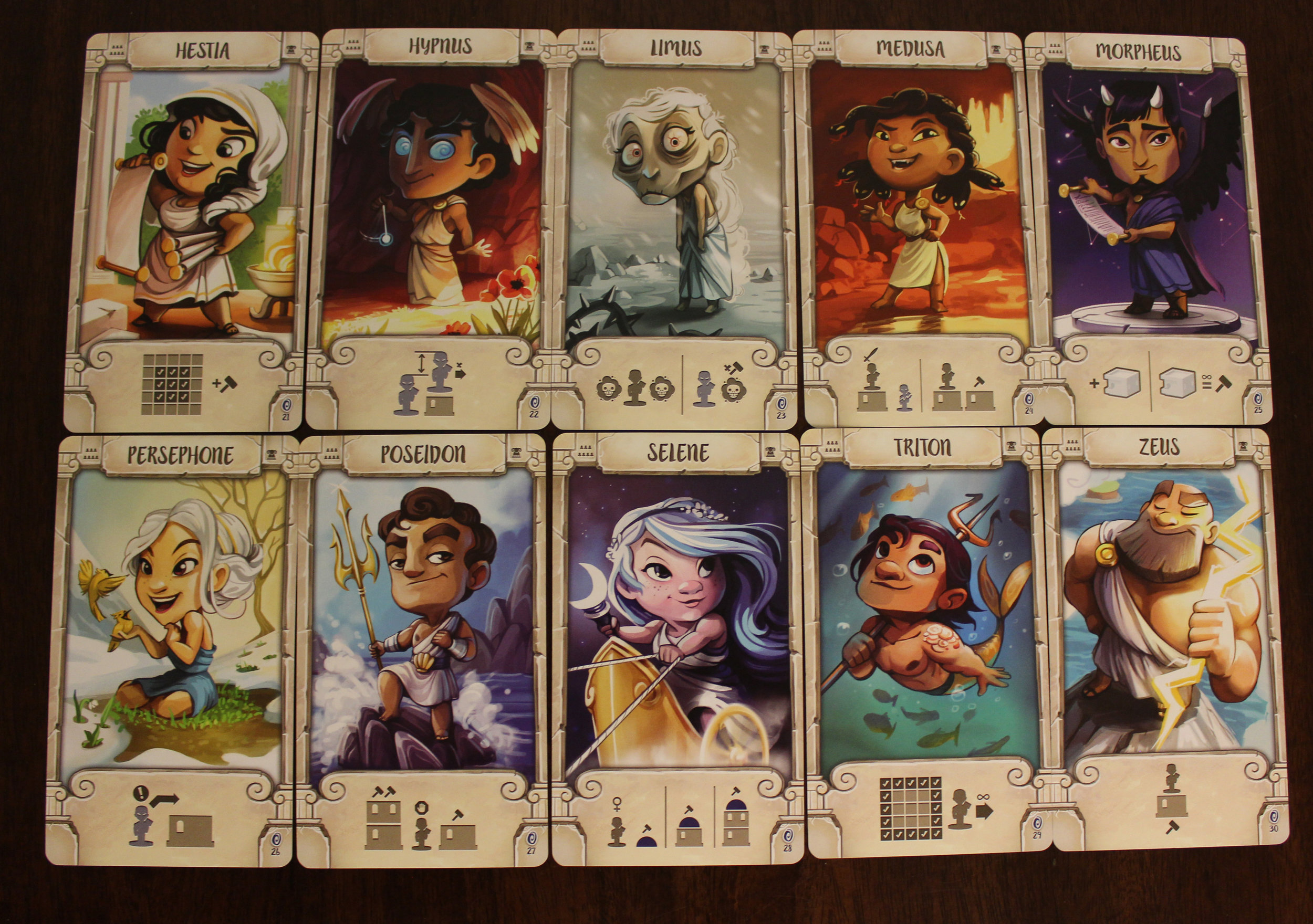Santorini
Santorini (2017) (BGG Link) - Abstract, grid movement, two-player
Designer: Dr. Gordon Hamilton
Artists: Lina Cossette, David Forest
Publisher: Roxley Games
Number of Players: 2-4 (2 preferred)
Playing time: 10-20 minutes
MSRP: $50
Santorini is a 2-4 player abstract game designed by mathematician Dr. Gordon Hamilton. Originally it was a self-published title released in 2004, made with simple blocks with little to no artwork. In 2016, publisher Roxley Games launched a Kickstarter for the new version, this time with 3D blocks, professional artwork, and a multi-level board. The Kickstarter ended with over 7,000 backers raising a total of $700,524 CAD. Sadly, I did not back it when I had the chance, but that's more than ok, as almost all of the contents from the Kickstarter can be found in the base game. The rest can be found in the Golden Fleece expansion, which we may cover at a later time.
Named after the beautiful Greek isle with the iconic white cubiform buildings topped with blue domes, Santorini pits two players against each other on a 5x5 grid (the game also works as with three players, and four players working as a team, but the game makes it clear that it's designed to be a one-on-one experience). Each player controls two builders,which are little detailed figures that you use to perform the only two actions in the game: 1) move into any adjacent space, and then 2) build. You build by placing a building piece on any space (not currently occupied by another builder). Each building can only go three spaces high, and builders can only climb one level at a time, but they can build up to, or drop down from, any height. To win, a builder has to move from a second level to a third level. Third levels can be blocked completely by building a dome, which "completes" the tower and keeps anyone from accessing the space. Additionally, if a player is unable to move and build, they lose.
Santorini has received accolades from a multitude of game reviewers and has currently climbed to the #2 abstract game and #3 family game on BoardGameGeek.com. Truth be told, my initial discovery of it did not match the enthusiasm of the other reviewers. I played my first two games without god cards, as the game suggests, and went from confusion ("This seems too easy..."), to surprise ("Oh, now I see, there's a bit of strategy...") to, sadly, boredom ("And this is all there is? Really?"). It's like a more complex 3D version of tic-tac-toe, and while I appreciated the theme and artwork, the game was not clicking with me like it seemed to be doing with everyone else.
That is, not until we started using the god cards. Suddenly the game had variety, replayability, and real strategy. Now each game played out differently, and each god opened a whole world of possibilities. Like Onitama's varied movement cards, the god cards create a rich new gaming experience every round. There are gods like Apollo, who can move into another worker's space, forcing them to take your previous place, or the Minotaur who does the same thing, except he pushes the other worker one spot further away. Zeus lets workers build spaces underneath themselves, and Bia and Medusa actually remove opponent's workers from the game. Eros and Chronus give alternative win conditions, and Athena keeps your opponent from moving up levels. The game comes with 30 different gods, titans, and monsters that turn this game from a simple abstract game into a fully-realized strategic experience. It's fun, easy to learn, quick, and it's a blast to watch as the island of Santorini fills up.
I really can't go on enough about the art. I love the cute little gods and goddesses that were designed for this game. They really emphasize their personalities and realms of influence, and span all body types, hair colors, skin tones, etc. As a mythology nerd, I get a huge kick out of seeing some of my favorite Greek myth characters, as well as some of the obscure ones (seriously, who's heard of Bia or Limus?).
So far, the people I know who have played this love it (Jeff and Anita both really enjoyed the game), but from what I could gather, the game's real target audience is families with children. Everything about the game screams "younger players," from the cutesy (and, again, amazing) artwork, to the colorful board, to the big bulky plastic pieces. I could see this appealing to children a lot more than, say, chess or checkers might. I currently do not have children, so I can't attest to its success, but it is my understanding that this game goes over very well with them. It'd certainly be a useful tool for teaching kids about Greek mythology, and I can always get behind that.
If you're looking for a new type of abstract game with a lot of variety and fantastic artwork, I'd recommend checking this game out. It is a bit pricey for what it is (and that's without the expansion), but the price point makes sense considering how much plastic is in the box. If you're someone who wants to get your children into board gaming and strategic thinking, then I definitely recommend this game. It took awhile for me to fall under its spell, but I can definitely say that I'm now a fan.
Geekundspiel Rating: Great!
















